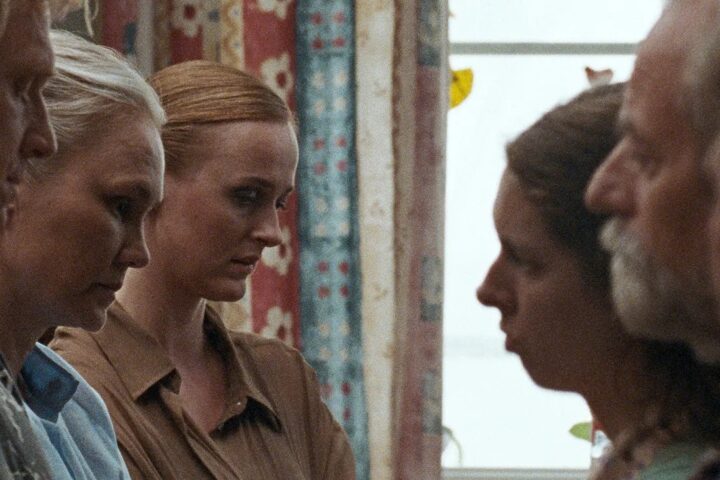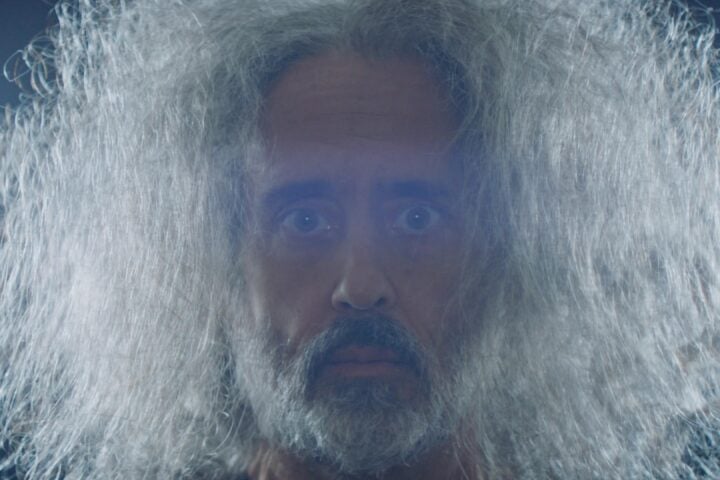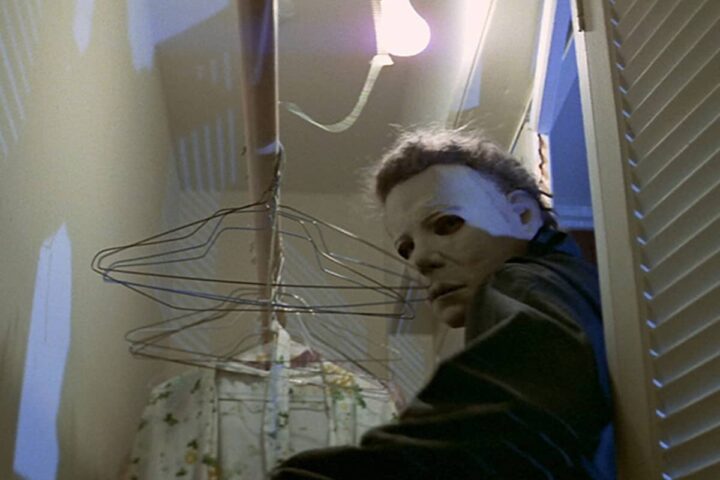Rob Tregenza is always questioning what can be accomplished with the simple building blocks of cinema. In particular, his career can be seen as one long investigation of the possibilities of both the tracking shot and the crane shot. Since 1988’s Talking to Strangers, he’s experimented with the crane shot—a technique invented to show off the entirety of D.W. Griffith’s Babylon set in his Intolerance—on much smaller productions, a choice that always brings a touch of the miraculous to the mundane, as if, in those moments where the camera hovers over the characters in his worlds, we’re looking through the eyes of angels.
Tregenza’s The Fishing Place, like his previous Gavagai, is both shot and set in rural Norway. But this is a period piece, and his frames abound in military uniforms, old Ford Model A’s, and period-accurate furniture. Here, World War II continues to rage on, and the small village of Notodden is under Nazi occupation. Occupied, that is, by a single officer: Aksel Hansen (Frode Winther), a clean-cut Aryan who’s polite but firm in his every interaction.
Another stranger, Anna (Ellen Dorrit Petersen), works as a maid for several clients, but this is a front. Turns out, she had been imprisoned during the Nazis’ initial invasion and agreed to spy on a third stranger, Adam (Andreas Lust), for her freedom. Adam is a Lutheran pastor and possible enemy of the state; he speaks plainly, sometimes curtly, and finds it difficult to listen to the struggles of others as he suffers his own crisis of faith. And as soldiers, maids, and pastors easily find their way into the homes of the townsfolk throughout The Fishing Place, these strangers play out their tense games within an already tense community.
Tregenza’s simple setup fits into the mold of a wartime espionage noir, with plenty of room for third-act double-crossings and bromides about freedom and democracy, but the very title of The Fishing Place hints at a different kind of film. Most scenes follow the priest as he makes simple house visits around the village; in one, he visits a dying theater actress (Gjertrud Jynge) who confesses that her husband (Eindride Eidsvold) isn’t the biological father of their son (Peder Herlofsen), all while the family maid (Ingvild Holte Bygdnes) sternly asks him to leave.
In this way, the film recalls Henry King’s I’d Climb the Highest Mountain, which is also about a pastor finding his way into a community household by household, discovering blessings and tragedies in equal measure along the way. But as one episode folds into the next here, the tension does briefly turn to action, only for the film’s narrative to end shortly after the one-hour mark. Then, a single 20-minute crane shot flies around and above the sets of The Fishing Place itself, before the film ends with the cast and crew packing up and going home.
Though Tregenza’s camera travels enough to call our attention to it, none of the shots here ask us to be impressed at complex blocking or precise rack focusing, even if plenty of that is evident. What’s truly impressive here is the beauty of the Blefjell mountains that paint the background of exterior shots. Every time the camera spins 180 degrees, the mountains briefly become the subject of the ultra-widescreen frame. Therein lies the subtle handiwork of Tregenza’s tracking and crane shots, as a traditional shot/reverse-shot couldn’t offer such a deliberate respite, which here acts as the cinematic equivalent of a caesura or, perhaps, playing pianissimo.
And, as much as the crane shot allows the camera to explore different vantage points, The Fishing Place’s particular genius lies in a very consistent use of off-screen space. The camera never turns away from the victim of a sudden shootout in order to reveal the marksman; though the audience may guess the perpetrator, the camera’s incuriosity is disturbing. On the other hand, some of the aforementioned 180-degree pans occur after a damning, private, or intimate conversation, such as one that reveals that Aksel has been just off screen the entire time and may very well have been just off screen throughout the entire film. The same camera technique that provided a respite by showing the mountains now provides an equal measure of dread.
The masterful final sequence is nothing less than a celebration of the crane itself. It’s initially clever how the camera shows (likely contrived) behind-the-scenes footage of the interior sets, cast, and crew; after all, this is what the camera would see if it were truly free. Of course, plenty of films have broken the fourth wall in this way. What’s more imaginative is the way Tregenza amkes the crane itself the subject, its operators briefly revealed as the camera pans around, but then, after the camera exits the building and looks out toward the present-day city, it pivots back to the crane’s arm, framing the machinery in the middle of the village’s vista and creating a self-portrait of the device that allowed us to first fly over the Babylon of Intolerance. It’s a perfect coda to a film that actively ponders what cinema can do and where it can go next.
Since 2001, we've brought you uncompromising, candid takes on the world of film, music, television, video games, theater, and more. Independently owned and operated publications like Slant have been hit hard in recent years, but we’re committed to keeping our content free and accessible—meaning no paywalls or fees.
If you like what we do, please consider subscribing to our Patreon or making a donation.




